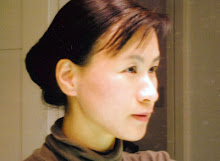William Wordsworth (7 April 1770 – 23 April 1850) was a major English Romantic poet. He was England's Poet Laureate from 1843 until his death in 1850. I was looking for some old English poems in structures just like Japanese Haiku poem (Haiku poem has a three-line 5-7-5 syllable patterns). At the research essay tutorial with Rebecca, I told her I was looking for bricks or brocks or architectures just like cathedral which have similar visible regularities in their structures. Carl Andre’s bricks became the subject for my research essay. However, during the tutorial, Rebecca also gave me information about English poem that I thought interesting. William Wordsworth’s poem Tintern Abbey made me imagine the structure of the old beautiful building –Actually, what else could I do? I wish I could read these English poems in the true meaning. But I feel like I can cope with this feel of distance by Keat's 'Negative capability' (!??).
Anyway, I felt happy when I find William Wordsworth loved cuckoos. I learned other famous English Romantic poets had their own favorite birds: For Percy Bysshe Shelley (1792-1822), it was skylarks and for John Keats (1795-1821) it was nightingales.
TO THE CUCKOO
O BLITHE New-comer! I have heard,
I hear thee and rejoice.
O Cuckoo! shall I call the Bird,
Or but a wandering Voice?
While I am lying on the grass
Thy twofold shout I hear,
From hill to hill it seems to pass,
At once far off, and near.
Though babbling only to the Vale,
Of sunshine and of flowers,
Thou bringest unto me a tale
Of visionary hours.
Thrice welcome, darling of the Spring!
Even yet thou art to me
No bird, but an invisible thing,
A voice, a mystery;
-TO THE CUCKOO, William Wordsworth



 These are the photos of damage before the conservation. My scroll painting got a mad water stain and smork dust.
These are the photos of damage before the conservation. My scroll painting got a mad water stain and smork dust.
 ...and some fire man's kicks!
...and some fire man's kicks!
 Following three are photos taken in the afternoon of 29th immediatery before being taken out from fire place to get repaired by conservation team. The shopping bags I placed on top of works before I left studio in previous day helped minimizing damages.
Following three are photos taken in the afternoon of 29th immediatery before being taken out from fire place to get repaired by conservation team. The shopping bags I placed on top of works before I left studio in previous day helped minimizing damages.









































